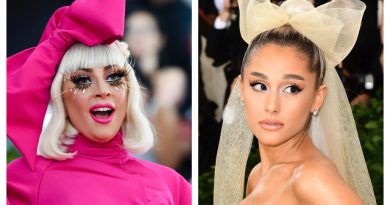China’s Beauty Market Seen Surpassing 1 Trillion Yuan in Sales – WWD
China has become key to growth for global beauty companies, driven by rising household incomes, new entrants and the increasing development of local brands.
But over the last few months, there have been growing signs of concern, leading to questions as to whether the strong are simply getting stronger in China, or is the market weakening?
This month, the most important marketing event for the beauty industry in the first half of the year — the “6.18 online shopping festival” — was affected by a combination of factors such as ongoing epidemic control measures, the introduction of new regulations, weak consumption, rising raw material prices and supply chain disruptions. The event was described by industry insiders as “the most difficult 6.18 in history.”
According to data from the National Bureau of Statistics of China, the total retail sales of cosmetics goods from January to May were $22 billion, down by 5.2 percent, including $4.34 billion n May, down 11 percent. Sales in May 2021 were $4.98 billion, an increase of 14.6 percent on May 2020.
With negative growth in the cosmetics category over the past four quarters in a row, the “6.18 online shopping festival” became a critical opportunity to boost sales. Yet statistics showed the opposite: total online sales of beauty and personal care (skin care and makeup) on Tmall, JD and PDD reached $6.12 billion, a drop of nearly 20 percent compared to last year’s $7.64 billion, and the number of cosmetic brands achieving 100 million yuan sales in GMV decreased from seven last year to three this year.
The pre-pandemic global cosmetics market was vibrant. According to Euromonitor, the global cosmetics market reached $488 billion in 2018 and $514.8 billion in 2019. In China, the market volume reached $38.5 billion in 2018, leading the world with a growth rate of 14.9 percent and the market volume reached $77.6 billion in 2020.
Gian Andrea Positano, director of Cosmetica Italia Centro Studi, the Italian association of cosmetics companies, said during the 6.18 China International Beauty Summit organized by WWD China, that “the Italian beauty market is expected to reach 12.9 billion euros in 2022, an increase of 6.5 percent year-on-year,” while the figure for China is estimated to reach $92.1 billion. The increase will mostly be driven by the fast-growing segment of male cosmetics and the the rise of Chinese beauty products.
Two major factors contributed to the meteoric rise of the beauty market in China. Over the last decades, more than 5,000 foreign cosmetics have entered the Chinese market, generating continuous growth, while at the same time creating a favorable business environment for local beauty companies. With the major involvement of international brands, the Chinese beauty industry value chain is becoming more sophisticated.
The second factor is the growing consumer base for beauty and skin care products, which expanded rapidly due to rising household incomes, the increasing consumption power of lower-tier cities and the rise of independent Chinese brands. Yet those figures express mixed message since gaps still exist despite the booming market.
For Shiseido, which has been on the Chinese market for 41 years, China became the largest overseas market in 2017. Its China offices in Shanghai was positioned as its “second headquarters” at the end of 2019.
Shiseido’s “second headquarters” in Shanghai.
Revlon, which entered the Chinese market as early as 1996, reported sales figures of $29.8 million in China already in 1998. Yet following that strong market debut, the beauty firm revealed its withdrawal from China in 2013. But after several ups and downs and a high-profile reentry into the market in 2019 after the acquisition of Elizabeth Arden, the company still failed to gain traction. News about its seeking bankruptcy reorganization became a much-searched topic in China and triggered a round of “sentimental consumption” by loyal consumers. But earlier this month, Revlon filed for Chapter 11 bankruptcy protection in the U.S.
L’Oréal Group, which officially entered the Chinese market in 1997, has grown by more than 20 percent for the last two years. With operations in 150 countries and regions, China is its second-largest market.
In an indication of the importance of the market to its future, L’Oréal in May revealed the establishment of its first investment company in China, marking the beginning of investment from the beauty giant in Chinese start-ups.
LOréal’s research and innovation center in China.
Shortly afterward, Xiamen Ziyue Equity Investment Partnership (Limited Partnership), an entity of Ziyue Fund — Shiseido’s first China investment — was registered with a capital of $74.77 million.
Oriental Beauty Valley in Shanghai’s Fengxian District, one of the world’s leading cosmetics industry clusters, is home to L’Oréal’s Shanghai Beauty2 Investment Co. Ltd. and the third R&D center of Shiseido in China. The former is dedicated to investing in innovative beauty technologies, while the latter empowers its portfolio companies in the beauty industry with R&D centers and production bases.
By the end of 2021, the Oriental Beauty Valley had gathered more than 2,200 companies related to the “beauty economy,” with more than 3,000 brands, contributing to more than 40 percent of the sales of cosmetics in the whole Shanghai region, with an industry scale of nearly $10.4 billion.
It is also home to domestic beauty industry leaders such as Jala Group and Pechoin, and has formed a “beauty and health industry alliance” with major players in the beauty and health industry to promote cooperation and investment. This “urban industry ecosystem,” offering full regional coverage, functional integration, industry support and a broad range of services, has a brand value of $4.28 billion.
Jala Group’s headquarters.
Yuan Fei, general manager of the Oriental Beauty Valley, attended the China International Beauty Summit held by WWD China. When asked about how to empower the post-pandemic development of the industry, he said, “Apart from land, plants, buildings, talents and R&D, the most important thing is to provide a market opportunity for enterprises. Oriental Beauty Valley creates an inclusive and open industrial cluster, allowing companies to feel at home, and cooperate with upstream and downstream partners, even grow in harmony with friends and competitors on this platform.”
Despite various challenges, clusters like the Oriental Beauty Valley helped to make the Chinese market more attractive to international companies. As L’Oréal China’s chief executive officer Fabrice Megarbane explained at the launch of Shanghai Beauty2 Investment Company, “The most important thing for L’Oréal is to look for opportunities in the midst of challenges and seize the initiative.”
Jesper Herold Halle, commercial consul at the Danish Consulate General in Shanghai, who aims to facilitate cooperation with Danish companies working in China, also stressed to WWD China that “right now, it is the best time to enter the Chinese market — a market full of opportunities and potential.”
Both domestic and international entrants into the market have a long history to play off of.
As early as 1829, the first Chinese national cosmetics brand, Xiefuchun, was established, focusing on duck-egg face powder, ice musk oil and fragrance products. In 1862, Kophenix, a brand from Hangzhou, was founded with products such as goose-egg face powder and pearl cream being highly sought after. In the 1930s, Chinese industrial cosmetics began to develop, with Shanghai Vive and Pechoin becoming the favorites of Shanghai’s celebrities and being exported to Southeast Asia. In 1898, the predecessor of Shanghai Jahwa Corp., the Hong Kong-based Kwong Sang Hong cosmetics company, was established, and then moved to Shanghai to become the first modern Chinese cosmetics company, creating the Liushen, Maxam, Heborist and other brands. Although domestic brands dominated most of the Chinese beauty industry in the last century, from the ’90s onward, leading European and international firms entered the market and played a crucial role in its development. They include:
• 1981: Products from Shiseido were launched in major shopping malls in Beijing
• 1985: Johnson & Johnson enters the China market
• 1989: The official market entry of Olay
• 1989: Unilever enters Shanghai
• 1989: Avon and Guangzhou Cosmetics Factory establish the Guangzhou Avon Company as a joint venture
• 1993: Estée Lauder enters China
• 1995: Maybelline enters Guangzhou
• 1996: L’Oréal enters China.
By the beginning of the 21st century, almost most of the major international cosmetic brands had entered the market.
According to Positano, “Habits of Chinese consumers are different from that of European consumers, so to gain competitiveness in the Chinese market, it is important to follow the new consumer habits.”
As a result, localization of international brands has entered a new period of rapid development, from the early days of direct introduction of imported products, to adjustments of product formulations according to the needs of Chinese consumers, and the current export of products made in China to foreign markets and the increased speed of new product development.
At this point, “sustainability” has become the core path for development. At Oriental Beauty Valley, for example, the development and marketing of biodegradable cosmetic packaging materials; the integration of green supply chains and the establishment of clean beauty standards, and the exploration of the market-oriented transformation of “carbon reduction” through carbon trading are being expanded and practiced.
Clearly, China is not just a key consumer market and manufacturing hub, but has begun to become a driver of innovation. From the establishment of R&D centers to investment funds, international beauty giants such as L’Oréal, Shiseido and Unilever have continued to expand their investments in China while Shanghai Jahwa Corp., Jala Group and Florasis have started their internationalization to explore international markets.
And while foreign brands are increasing their presence in the Chinese market, Chinese beauty brands are also going abroad through cross-border e-commerce. This trend of bringing in from abroad and going out from China has remained unchanged in these challenging times, with the Chinese beauty market expanding from 600 billion yuan, or $89.69 billion, to 1 trillion yuan, or $149.48 billion.
According to the “China Cross-Border E-Commerce Development Report 2021” jointly released by Google and Deloitte, in terms for overseas performances, beauty and personal care stood out in 2020, with many fast-growing direct-to-consumer brands emerging and showing potential.
But for Chinese beauty brands, the key is to learn from international groups, especially in terms of sustainability.
As Zhao Bingbing, chief representative for Greater China at the London Development Promotion Agency, said, “Chinese beauty brands shall change their storytelling approach to adapt to the cultural environment overseas, paying particular attention to the two main values of embracing multiculturalism and sustainability.”
Editor’s Note: China Insight is a monthly column from WWD’s sister publication WWD China looking at key developments in the China market.






